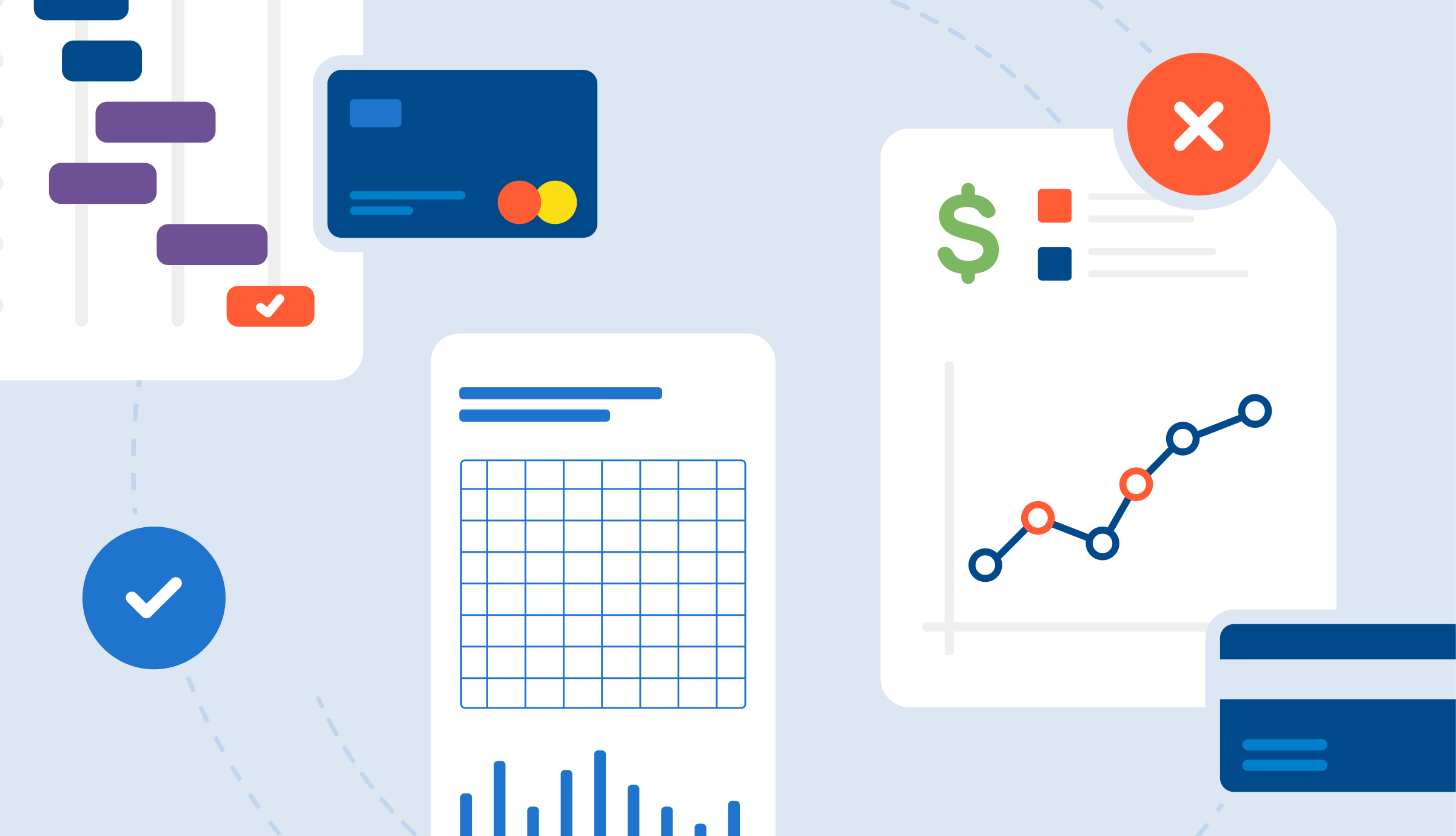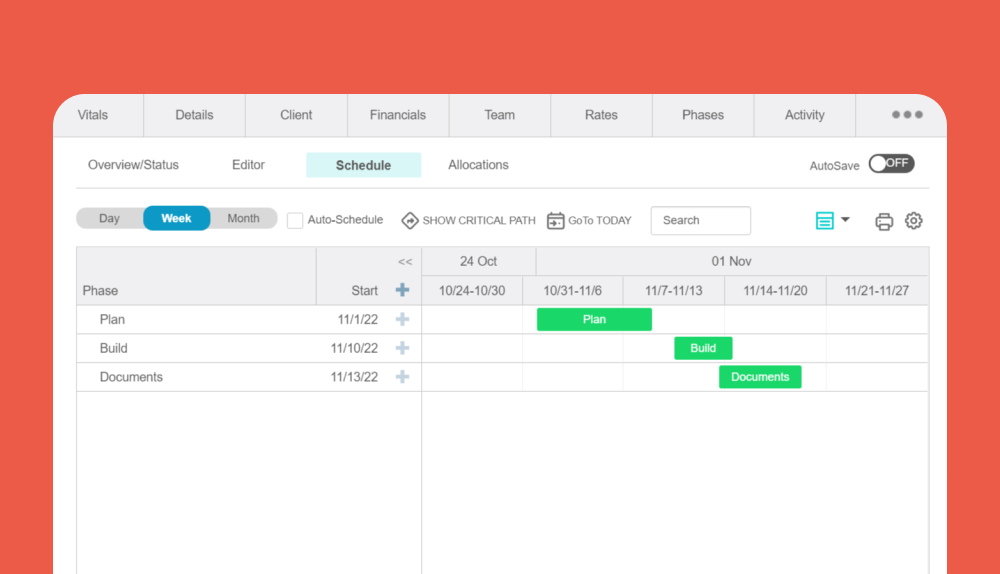Today’s professional services industry is fast-paced, making effective resource management extremely important. While many organizations focus primarily on time and money as their key measurement, proper resource allocation management has a real impact on a firm’s ability to scale effectively.
In this blog, we’ll delve into why resource management is important and explore the broader implications it has on the success and sustainability of professional services businesses. Discover how optimizing resources by leveraging resource management software to maximize operational efficiency can give your firm the competitive edge needed to stay ahead of a turbulent economic climate and your competitors.
What is Resource Management?
Resource management encompasses the strategic allocation and utilization of an organization’s employees to achieve its goals and objectives. While billable time and money are commonly recognized as key resources, resource management goes beyond these factors. It involves effectively managing the team members responsible for executing a task or project in the most cost-effective and beneficial way for both the firm and its clients.
By optimizing the allocation and utilization of these resources, businesses can enhance their productivity, efficiency, and ultimately, their growth potential.
Defining resource management also involves identifying and prioritizing resource needs, developing strategies to acquire and allocate resources, and monitoring staff utilization to ensure optimal outcomes. This holistic approach to resource management enables businesses to make informed decisions, minimize waste, and maximize the value derived from their resources.
Resource Management Process Challenges
Achieving effective resource management without a dedicated solution presents a myriad of challenges for companies, often resulting in inefficiencies and hindered growth.
Here are some common processes companies who don’t have a dedicated solution may employ, along with their drawbacks:
Manual spreadsheets: While seemingly straightforward, manual spreadsheets are prone to errors, lack comprehensive visibility, and struggle to accommodate scalability.
Retro-fit project management software: Attempting to repurpose general project management software for resource workflows introduces complexity, making tracking arduous and limiting resource visibility.
Collaboration tools like email and Slack: Relying on communication platforms like email and Slack can lead to information overload, coupled with a lack of centralized data control and limited automation capabilities for seamless scaling.
Ad hoc methods like verbal communication, whiteboards, and sticky notes: These spontaneous methods lack comprehensive visibility and stability, making meaningful reporting challenging.
It becomes evident that specialized resource management solutions have become essential tools for professional services organizations to address these challenges, offering enhanced efficiency, transparency, and informed decision-making.
The Direct Impact of Resource Management on Business Growth
Ignoring the problem comes with risk. Increasingly, professional services firms are looking for stronger and better-detailed resource planning as they take on new work, look for incremental growth opportunities, and manage teams in unpredictable business environments.
Organizations that fail to address the resource management process challenges we outlined above are commonly plagued by:
Inefficient resource allocation: Without resource management, businesses may struggle to identify and allocate the right talent to projects. This can lead to delays, decreased project quality, and dissatisfied clients, ultimately affecting the company’s reputation and potential for repeat business.
Poor employee utilization: A lack of visibility into employee skills and availability can result in the underutilization of key talent. This not only hampers employee morale but also leads to lost revenue opportunities for the business.
Reduced project profitability: Inadequate resource management can lead to project overruns, as projects may take longer than planned or require additional resources to complete. This can erode profit margins and impact the company’s overall financial performance.
Address External Market Conditions of Managing Resources with Confidence
Failure to address the internal challenges around resource planning and management will negatively impact your ability to compete in the markets you choose. The organizations that choose to address these needs will find themselves in a stronger position to take advantage of new market opportunities in the face of:
Increased market competition: In highly competitive industries, efficient resource management becomes a strategic advantage. Businesses must optimize their workforce to deliver projects more swiftly and at a competitive cost to outperform rivals.
Evolving client expectations: Client demands are continually evolving, requiring companies to adapt their resource allocation strategies accordingly. Resource management enables businesses to be more responsive to client needs, fostering stronger client relationships.
Remote work and distributed teams: The rise of remote work and distributed teams necessitates effective resource management to ensure seamless collaboration and coordination across different locations and time zones.

Discover the Benefits of Resource Management for Operations and Finance Teams
Addressing siloed data and inefficient manual processes through purpose-built resource management software empowers your firm to foster sustainable growth, elevate employee satisfaction, and enhance profitability.
Let’s explore the benefits of resource management more in-depth.
Effective Resource Management Will Optimize Operational Efficiencies and Agility
Enhanced project planning and execution: Effective resource management allows businesses to identify the right talent for each project, matching skills to specific tasks. This improves project planning and ensures that the right people are working on the right projects, leading to higher-quality deliverables and increased client satisfaction.
Improved resource allocation: By having a centralized view of available resources, companies can optimize their resource allocation. This prevents overbooking or underutilization of employees, reducing downtime and idle hours. As a result, teams increase productivity, and project timelines are shortened.
Real-time visibility: Resource management tools provide real-time visibility into project progress and resource availability. Project managers can identify potential bottlenecks or underperforming areas early on, enabling proactive interventions to keep projects on track.
These capabilities dramatically improve the overall agility and adaptability of your operations. Resource demands can change rapidly and resource management enables organizations to quickly reallocate resources based on changing project requirements.
Maximize Financial Flexibility and Foresight With a Resource Management Plan
Cost optimization: Efficient resource management minimizes resource waste, such as unnecessary overtime, idle time, or hiring external contractors. This leads to cost savings, directly impacting the bottom line and increasing project profitability.
Increased revenue and utilization: Optimal resource allocation leads to higher employee utilization rates, maximizing billable hours. Consequently, this increases revenue potential without requiring additional investments in recruitment or workforce expansion.
Accurate budgeting and forecasting: Clear visibility into resource availability and project timelines allows for more accurate budgeting and forecasting. This reduces the risk of budget overruns, which can negatively impact the company’s financial health.Professional services firms should be striving for at least 12 months of visibility into the financial state of their business — from working capital to existing project plans, forecasted projects, and those in the developing pipeline. Gaining this level of visibility and confidence with resource management software enables businesses to grow in any environment.
Offering the Best-of-Breed Technology for Resource Management
We here at BigTime are excited to bring on Primetric, a leading provider of resource management and financial planning software, into our native platform to honor our commitment of helping our customers achieve their desired level of transparency, operational efficiency, and profitable growth.
The acquisition of Primetric represents an extension of the BigTime platform’s industry-leading features in time tracking, project management, invoicing, and payments. Learn more about why BigTime and Primetric are a natural match.
Case Study: How Globiox Seamlessly Scaled Their Firm Without Growing Pains
One example of a professional services organization that was able to position itself for sustainable growth after implementing resource management software is Globiox.
Globiox is a life sciences and pharmaceutical consulting firm that prior to BigTime was using Kantata for a better part of a decade to manage its projects and resources. However, the software required a significant amount of training which the administrative staff could not keep up with.
Vice President, Andrew Rossman, came to BigTime looking for help to improve the evolving needs of their growing firm including:
- Switching to a virtual work environment as a company that needed online project and resource management tools that accommodated no longer being physically in the office together.
- A solution that would cut down on the administrative time it took to manage their client projects and the resources needed to allocate to specific tasks.
- Cost-effective software that had room for them to grow into without being a heavy investment upfront.

Conclusion: The Long-Term Benefits of Prioritizing Resource Management for Business Growth
Resource management is a critical driver of success for professional services businesses. By streamlining talent allocation, optimizing resource utilization, and enhancing project planning, companies can achieve operational excellence and financial growth. As businesses continue to face increased competition and dynamic market demands, resource management and resource forecasting will remain a cornerstone for sustainable growth and success. We hope to be your partner in building that foundation for growth. If you’re interested in a consultation with a member of our team, please follow the button below.
Frequently Asked Questions About Why Resource Management is Important
What is effective resource management?
Effective resource management involves optimizing the allocation, utilization, and distribution of available resources to achieve maximum efficiency and desired outcomes.
What is an example of good resource management?
A strong example of resource management in professional services is a consulting firm adeptly assigning consultants with the right expertise to client projects, ensuring optimal utilization of skills and timely project delivery.
What is resource management in simple words?
Resource management is the efficient and strategic handling of available materials, personnel, or assets to achieve desired goals while minimizing waste and maximizing productivity.
What is a resource management plan?
A resource management plan outlines the strategy and actions for effectively allocating and utilizing available resources to achieve specific objectives or projects.




